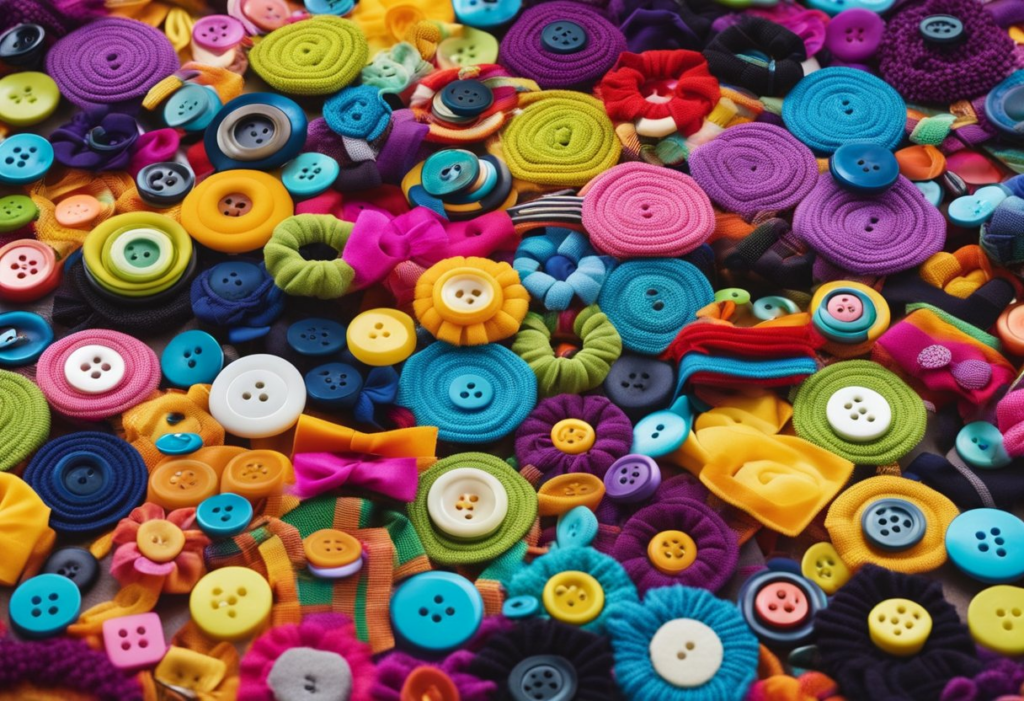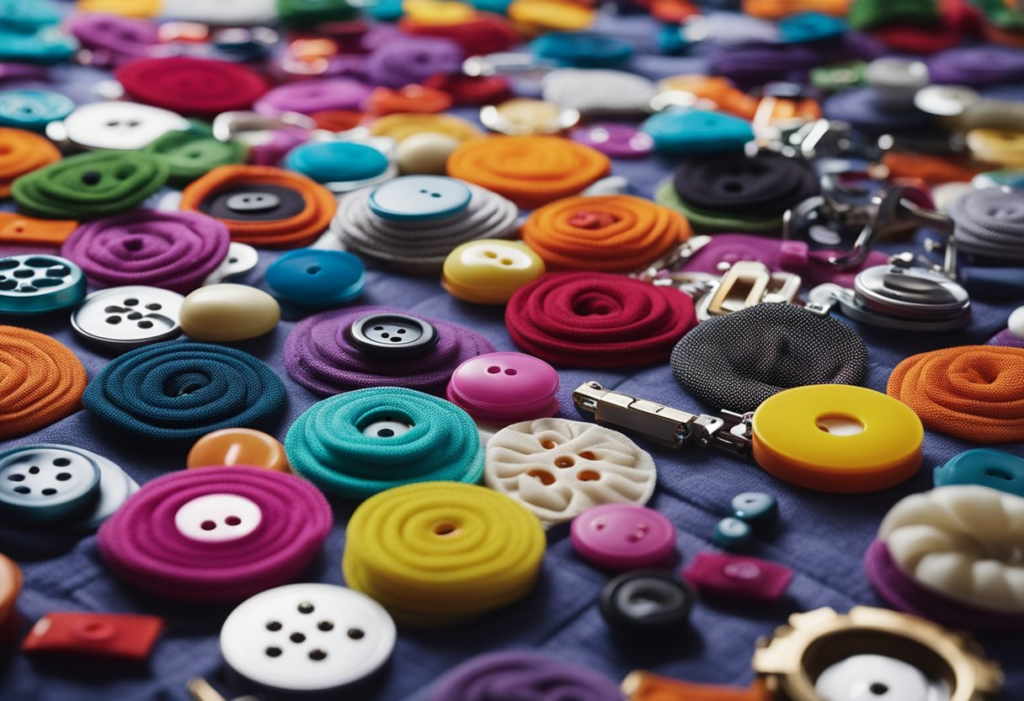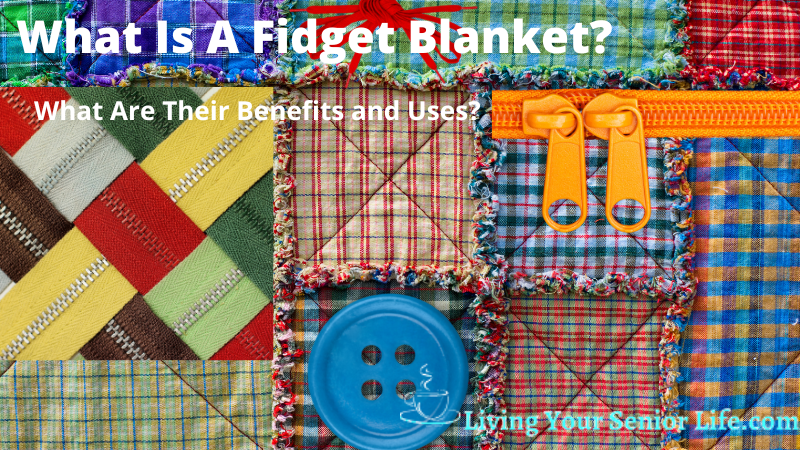If you or someone you know struggles with restlessness, anxiety, or cognitive decline, you may have heard of fidget blankets. But what exactly are they? Fidget blankets, also known as fidget quilts, sensory blankets or activity blankets, are a type of therapeutic tool designed to provide sensory stimulation and promote relaxation. These blankets are typically made with a variety of textures, colors, and interactive components that provide tactile and visual stimulation.
Key Takeaways:
- Fidget blankets are therapeutic tools designed to provide sensory stimulation and promote relaxation.
- They are often used in therapeutic settings for individuals with cognitive or sensory impairments but can be used by anyone looking for a calming and engaging activity.
- Fidget blankets provide a variety of sensory experiences and may include interactive elements such as zippers and buttons.
Video: What Is A Fidget Blanket?
What Are Fidget Blankets?

Fidget blankets, aka activity blankets or fidget quilts, are often used in therapeutic settings to help individuals with cognitive or sensory impairments. They can also be used by anyone looking for a calming and engaging activity. The blankets are designed to provide a variety of sensory experiences, such as tactile stimulation, visual stimulation, and even auditory stimulation. Some fidget quilts include zippers, buttons, or other interactive elements that can be manipulated to provide a sense of control and satisfaction.
Don’t let the word blanket fool you, though. Most fidget quilts are much smaller than a blanket more the size of what you see in lap quilts.
What Is The Purpose Of Fidget Blankets?
A fidget quilt is designed to help people with Alzheimer’s, Dementia, ADHD, anxiety, and other mental health issues focus and concentrate and helps maintain fine motor skills. They’re also great for children who need to calm down after a frenzy of activity.
The blankets allow for repetitive behaviors that are typically calming and distracting. This, in turn, can help alleviate boredom.
What Are Some Benefits Of Fidget Blankets?
Some of the benefits of a fidget quilts are thought to include:
ADHD
According to research done at the University of Mississippi Medical Center, students with ADHD may use fidgeting as a way of focusing on learning.
Alzheimer’s and Dementia
Fidget blankets can serve as a form of therapy for individuals with dementia or Alzheimer’s disease. The act of fidgeting with the objects on the blanket can help improve fine motor skills and hand-eye coordination. Additionally, the repetitive motions can help soothe and relax individuals who may be experiencing agitation or anxiety.
One of the primary symptoms of dementia and Alzheimer’s disease is memory loss, which can often lead to anxiety and restlessness. Fidget blankets can help alleviate these symptoms by providing a tactile and visual distraction. The various textures, colors, and objects on the blanket can help stimulate the senses and provide a calming effect.
Overall, the role of fidget quilts in dementia and Alzheimer’s disease is to provide a source of sensory stimulation and comfort, while also serving as a form of therapy and promoting cognitive function. If you or someone you know is living with dementia or Alzheimer’s disease, a fidget blanket may be a helpful addition to their daily routine.
Anxiety
Fidget blankets can help alleviate tension and relieve stress. The presence of an instant relief toy in one’s restless hands can help focus your mind on a specific task and is relaxing for most people with anxiety.
Investigators from Rice University placed 21 adults on a break. During the break, half of the participants took part in calming activities (one was using fidget toys). Those who were busy in doing so had significantly lower self-reported anxiety levels.
Autism and Asperger’s Syndrome
For individuals with autism, repetitive behaviors can be a way to self-soothe and regulate their emotions. However, these behaviors can also be disruptive and interfere with daily activities. Fidget blankets provide a safe and appropriate outlet for these behaviors, allowing individuals with autism to focus on other tasks and activities.
These blankets are especially useful for helping people with Asperger’s Syndrome who tend to be over-stimulated by sensory input such as sounds or lights. To help control this overload, someone experiencing this might tap their fingers or pull on their clothes. A fidget blanket can keep their restless hands busy to help them focus.
Encourages Tactile Coordination
Fidget blankets can help improve brain and cognition abilities. This is because hand-eye coordination is used while using a fidget blanket. This sensory and tactile stimulation is thought to slow down cognitive impairment.
Fidget quilts can also be customized to meet the specific needs and preferences of each individual. Some blankets may include buttons, zippers, pom poms, a key ring or Velcro for those who enjoy the sensation of opening and closing things. Others may have different textures or colors for visual and tactile stimulation.
Components of a Fidget Blanket

A fidget blanket is a sensory tool that provides tactile and visual stimulation for individuals with sensory processing disorders, dementia, and other conditions. The following are the components that can make up a fidget blanket:
Fabric
Commonly used fabrics in fidget blankets include cotton, fleece, and wool. These fabrics are soft and provide a comfortable feel to the user. Cotton is a popular choice as it is breathable and hypoallergenic. Fleece is known for its warmth and softness, making it a great choice for colder climates. Wool is a natural insulator and provides warmth, making it an excellent choice for winter.
Textures
Textures in fidget blankets can range from smooth to rough and everything in between. The texture of the fabric can provide additional sensory input to the user. Some popular textures used in fidget blankets include bumpy, ribbed, and quilted. These textures can provide a unique tactile experience and can help to stimulate the user’s senses.
Buttons and Zippers
Buttons and zippers can be added to the fidget blanket to provide a challenge for fine motor skills. They can also be used for visual stimulation and to provide a sense of accomplishment when they are successfully manipulated.
Pockets and Sleeves
Pockets and sleeves can be added to the fidget blanket to provide a place to store small objects. This can include beads, strings of beads, and other small items that can be manipulated for tactile stimulation. Another idea is to have a zipper pocket. To create a zipper pocket sew a zipper between two pieces of fabric and attach it to a fabric square or rectangle.
Buckles and Locks
Buckles and locks can be added to the fidget blanket to provide a challenge for fine motor skills. They can also be used for visual stimulation and to provide a sense of accomplishment when they are successfully manipulated.
Busy Board Accessories
Busy board accessories, such as a muff or a busy board, can be added to the fidget blanket to provide additional sensory stimulation. These accessories can include items like locks, latches, and switches.
Overall, a fidget blanket is a versatile tool that can be customized to meet the needs of the individual using it. By incorporating a variety of textures and components, a fidget blanket can provide a range of tactile and visual stimulation, as well as opportunities for fine motor skill development.
Research and Support for Fidget Blankets
While there is limited research on the effectiveness of fidget blankets, anecdotal evidence suggests that they can provide sensory stimulation, improve fine motor skills, and promote relaxation.
Some fidget blankets include aromatherapy elements, such as pockets filled with lavender or other calming scents, which can further enhance their therapeutic benefits. Additionally, the use of different textures and materials on the blanket can provide tactile stimulation and promote sensory exploration.
Research on fidget blankets is still in its early stages, but some studies have shown promising results. For example, a study published in the Journal of Occupational Therapy in Mental Health found that fidget blankets can improve cognitive function and reduce anxiety in individuals with dementia.
Despite the limited research, fidget blankets have received support from occupational therapists and other healthcare professionals as a tool for promoting sensory integration and improving fine motor skills in individuals with various conditions. As with any therapeutic tool, it is important to consult with a healthcare professional before using a fidget blanket to ensure that it is appropriate for your specific needs.
Creating Your Own Fidget Blanket

If you want to create your own fidget blanket, you will need some basic sewing skills and some supplies. A sewing machine will come in handy as well. Be sure all accessories and parts are securely fastened. Here are the steps to follow:
- Choose your fabric: You can use any fabric you like, but it should be soft and easy to handle. You can use cotton, flannel, or fleece. You can also use different textures such as corduroy, velvet, or faux fur.
- Choose your thread: Use a thread that matches the color of your fabric. You can also use a contrasting color to add some interest.
- Choose your design: You can create your own design or use a pattern. There are many free patterns available online that you can use. You can also add some decorations such as tassels, ribbons, or buttons.
- Cut your fabric: Cut your fabric into the desired size. The standard size for a fidget blanket is 24 inches by 24 inches. You can make it bigger or smaller depending on your preference. Don’t forget to allow for a seam allowance.
- Sew your fabric: Sew your fabric together using a sewing machine or by hand. If you are using a sewing machine, use a straight stitch or a zigzag stitch. If you are sewing by hand, use a backstitch or a whip stitch.
- Add your decorations: Once your fabric is sewn together, you can add your decorations. You can sew on tassels, ribbons, plastic rings, pom poms, or buttons – let your imagination guide you. You can also use fabric paint or markers to decorate your fidget blanket. Remember you don’t have to spend a lot of money on these. Check out the dollar store, garage sales, and even around your home small inexpensive things to add.
- Quilt your fabric: If you want to add some texture to your fidget blanket, you can quilt it. Quilting involves sewing through all layers of fabric to create a design. You can use a quilting machine or quilt by hand.
Creating your own fidget blanket can be a fun and rewarding project. With some basic sewing skills, a sewing machine and some creativity, you can make a unique and personalized fidget blanket that will provide comfort and stimulation.
FAQs
What types of institutions use fidget blankets?
Many nursing homes use fidget blankets as a sensory tool to help calm and engage residents with dementia or other cognitive impairments. In addition to nursing homes, fidget blankets are also commonly used in hospitals, rehabilitation centers, and daycare facilities. You may also find a daycare or nursing home that would be very interested in receiving donations of fidget quilts. These institutions recognize the benefits of fidget blankets as they provide stimulation and promote relaxation for individuals with cognitive impairments or sensory processing difficulties.
What are some popular fidget blanket designs?
Fidget blankets come in a variety of designs and styles, depending on the individual’s needs and preferences. Some popular designs include blankets with zippers, buttons, ribbons, or textured fabrics. Other designs may include activities such as puzzles, mazes, or sensory toys. Fidget blankets can also be customized to include personalized items, such as family photos or favorite sports teams.
Where can I find fidget blankets for purchase?
Fidget blankets can be found online or in specialty stores that cater to individuals with sensory processing disorders or disabilities. Many online retailers offer a wide selection of fidget blankets that can be customized to meet specific needs and preferences. Some retailers may also offer fidget blankets as part of a sensory kit or bundle, which may include other sensory items such as weighted blankets or sensory balls. It is important to do research and read reviews before purchasing a fidget blanket to ensure it meets the individual’s needs and is of good quality.
Related Articles:
Conclusion
Fidget blankets have been gaining a lot of popularity lately and for a good reason! They come with a myriad of benefits that can help people with various conditions. From reducing anxiety and ADHD symptoms to improving tactile coordination and aiding in relaxation and stress relief for people with Autism, Asperger’s Syndrome, Alzheimer’s, and Dementia.
I hope you found What Is A Fidget Blanket? What Are Their Benefits and Uses? Informational and was able to address some questions about fidget blankets you may have had.
Do you have any experience with fidget activity blankets? What are your favorite items to put on a fidget blanket? Let us know in the comments below!










